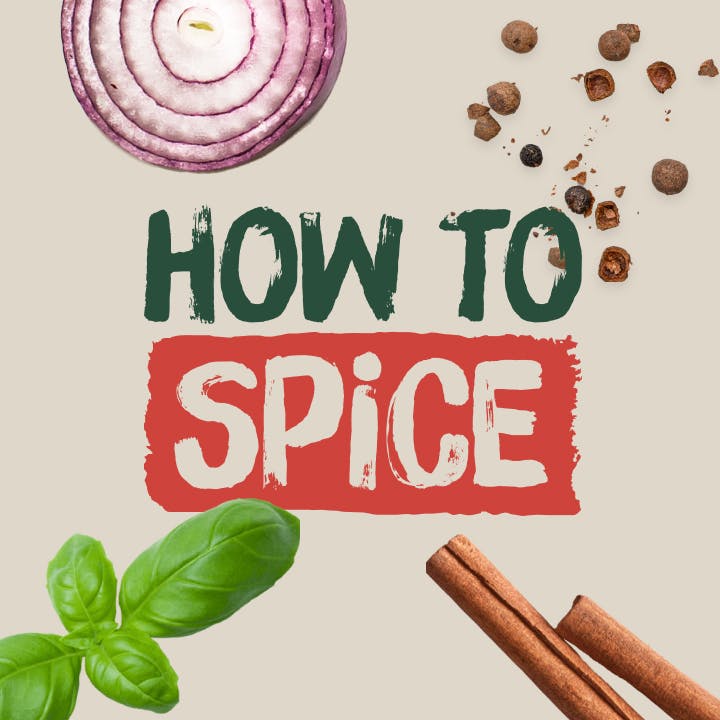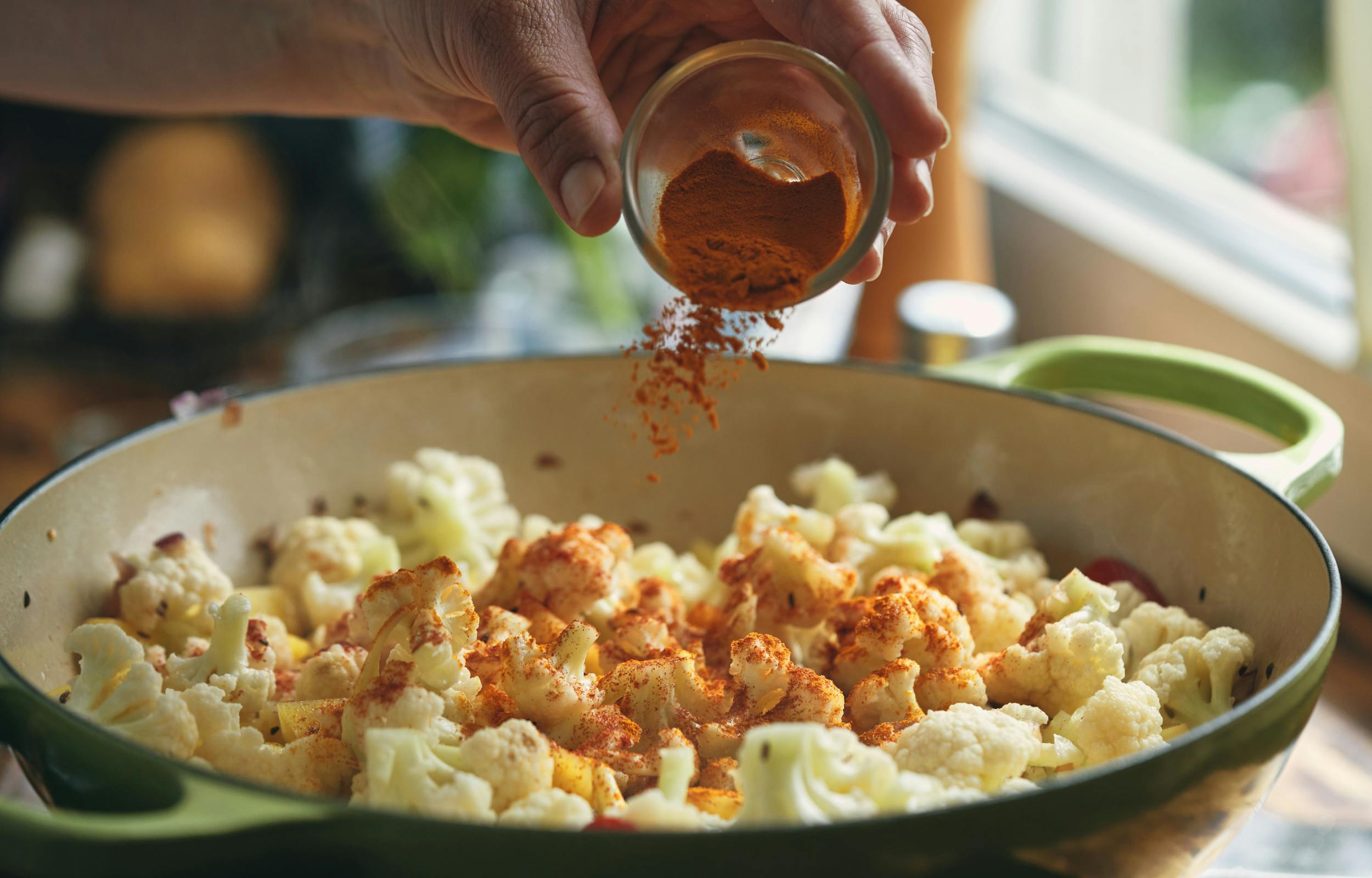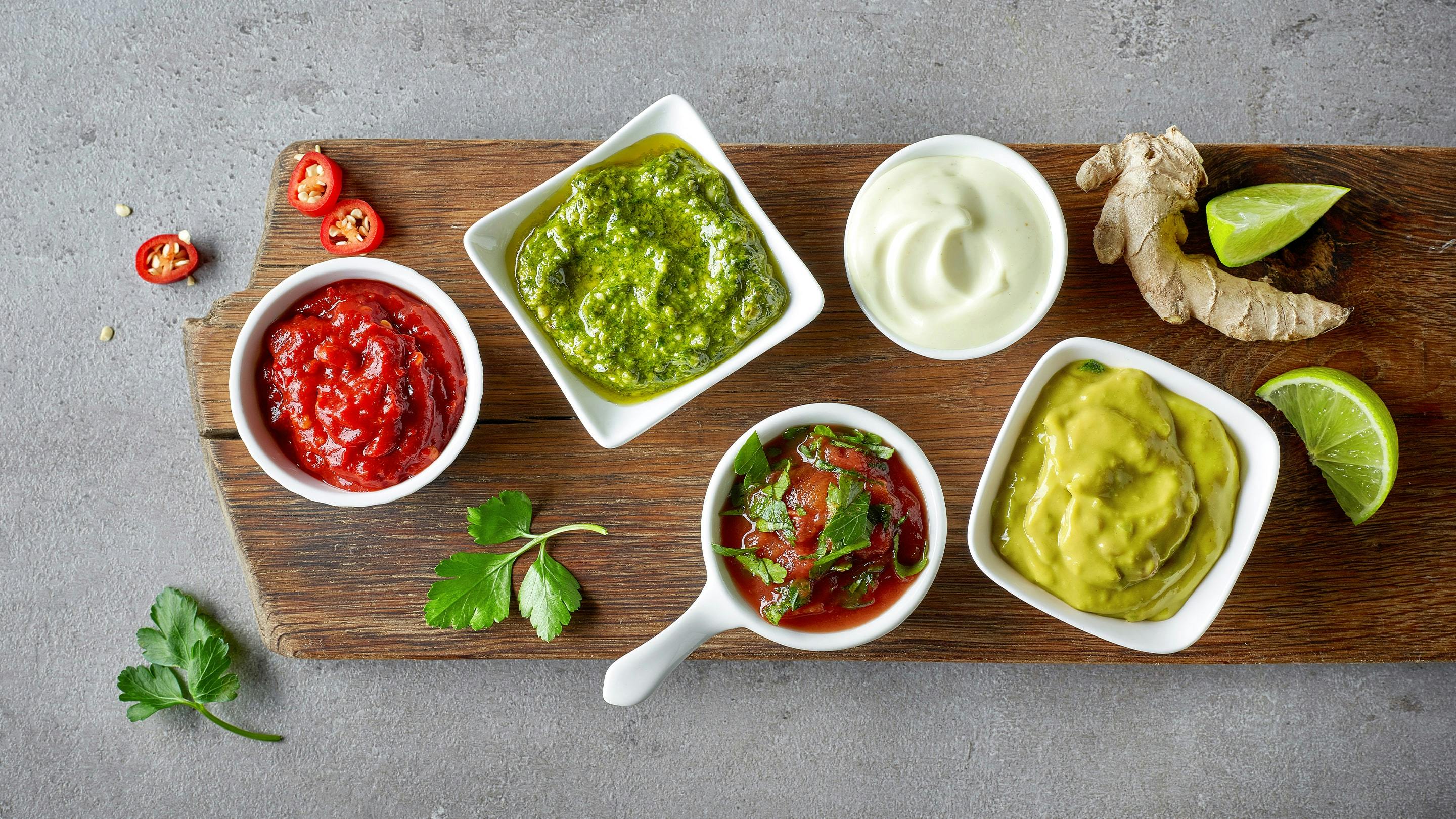
Discover our spice hub
Sometimes you just can't get enough of spices: Learn all about how to elevate your dishes in our new knowledge base!
Good things take time: Using spices correctly is not rocket science – but it is worth paying attention to the right timing. This prevents flavours from boiling away or becoming bitter, and allows you to get the most out of your spice rack.
Whole spices
Whole spices release their aroma slowly and evenly. They are ideal for dishes with long cooking times such as stews, soups, sauces or compotes.
Examples: peppercorns, cinnamon sticks, bay leaves, allspice, juniper berries, cloves
Coarse and ground spices
These spices love short-term heat: you can dry roast them briefly in a pan to release roasted aromas and essential oils.
Caution: do not burn them!
Examples: ground pepper, chilli flakes; also whole: coriander seeds, caraway seeds, aniseed, fennel, star anise, cardamom
Shredded spices
Dried herbs need to simmer in order to release their aroma. They are heat-stable and can be added early on to the sauce or dish – especially with meat, tomato dishes or stews.
Examples: thyme, rosemary, oregano, marjoram
Exception: herbs such as dill, parsley, chives or coriander should only be added at the end or used fresh.
Ground spices
These delicate spices are sensitive to heat; the finer the spice, the more careful you need to be with the heat.
Therefore:
Paprika powder & co.: only roast briefly and then immediately deglaze with liquid.
Cayenne & nutmeg: only use towards the end to season to taste.
Turmeric & ginger: cook in liquid – but do not roast dry!

5 classic spices & herbs – and when to use them
Oregano (crushed): Add early – heat stable.
Chilli (flakes): Can be added early on – but be careful: the heat builds up!
Thyme (dried): Add early on, especially with meat and sauces.
Cinnamon (stick): Add right at the beginning – needs time to develop depth.
Bay leaf: Add immediately – aroma develops slowly, remove before serving.
Extra tips for your spice kitchen
Marjoram (dried): cook with the other ingredients; add the fresh variety towards the end.
Cumin (whole or coarse): roast briefly, then add.
Nutmeg (ground): always add at the very end – use sparingly!
Cloves (whole): add early on – they release their aroma slowly.
- Consider this:
- The coarser, the earlier – the finer, the later. But: the recipe and cooking method also play a role!
Spice up the web! Share this article on...
Read more
Currently Viewing: 1 of









